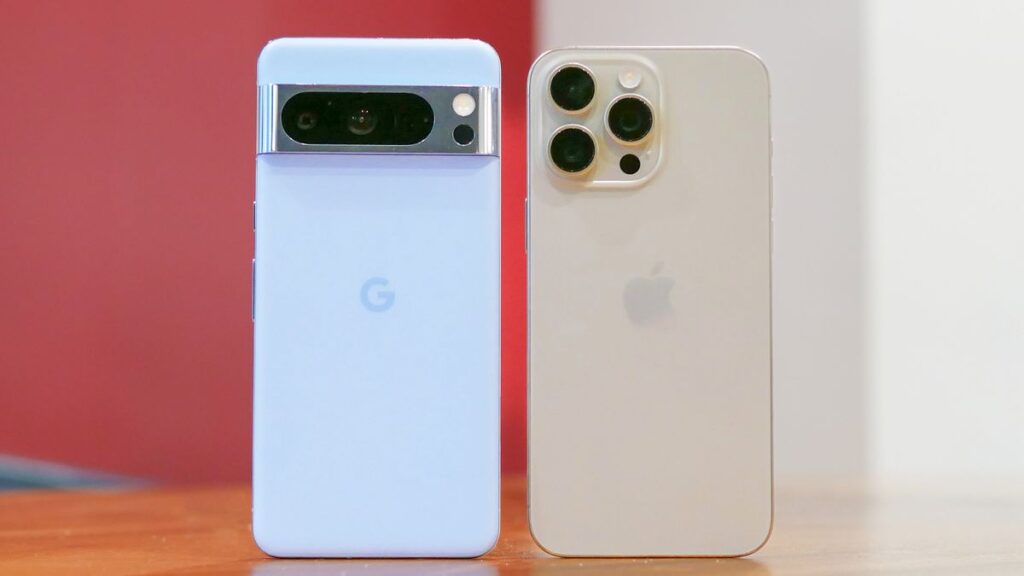In the ever-evolving landscape of mobile technology, the choice between iOS and Android has remained a pivotal decision for consumers worldwide. Both operating systems offer unique features, capabilities, and ecosystems that cater to diverse user preferences and requirements. Understanding the nuances between iOS and Android can significantly impact user experience, productivity, security, and overall satisfaction with your mobile device.
Introduction
In today’s interconnected world, smartphones have become indispensable tools that shape how we communicate, work, and access information. At the heart of these devices lie two dominant operating systems: iOS, developed by Apple Inc., and Android, an open-source platform primarily maintained by Google. Each OS has cultivated a loyal user base, but determining which one aligns best with your needs involves a deeper exploration of their respective strengths and weaknesses.
A Brief History of iOS and Android
iOS: Apple revolutionized the mobile industry in 2007 with the introduction of the iPhone and its proprietary operating system, iOS. Known for its sleek design, intuitive interface, and seamless integration with other Apple devices, iOS quickly gained popularity among users seeking a cohesive ecosystem.
Android: Google’s Android OS emerged in 2008, offering an open-source alternative to iOS. Android’s adaptable nature appealed to manufacturers, leading to a diverse range of devices across various price points. Its customizable interface and extensive app ecosystem soon made it a formidable competitor to iOS.
User Interface and Design
iOS: Renowned for its minimalist design and uniformity across devices, iOS prioritizes simplicity and aesthetic appeal. The interface features grid-like app icons on a homescreen, with a focus on smooth animations and responsive touch gestures. Apple’s design philosophy emphasizes user experience consistency, making it easy for users to navigate and find what they need quickly.

Android: Android offers a more customizable user experience, with manufacturers often layering their own interfaces (like Samsung’s One UI or Xiaomi’s MIUI) on top of the base Android OS. This diversity allows users to personalize their devices extensively, from app icons to widgets and themes. Android’s interface can vary significantly between devices, offering both familiarity and the opportunity for manufacturers to innovate.
App Ecosystem
iOS: The Apple App Store is renowned for its stringent app review process, which ensures a high standard of quality and security. iOS users benefit from a curated selection of apps optimized for Apple devices, often receiving new apps and updates first due to a unified hardware environment. Popular apps and games are typically available on iOS, although some niche apps may debut on Android due to its open-source nature.
Android: Google Play Store boasts a vast library of apps, reflecting its open ecosystem. Android users enjoy flexibility in app choices, with the ability to install third-party apps outside the Play Store if desired. This openness fosters innovation and diversity but can also lead to concerns about app quality and security. Google’s Play Protect service aims to mitigate risks by scanning apps for malware before installation.
Hardware Diversity and Price Points
iOS: Apple maintains strict control over hardware design, offering a limited but premium range of iPhones and iPads. Each device is meticulously crafted with a focus on build quality, performance, and durability. While iOS devices typically command a higher price point, they are renowned for their longevity and resale value.
Android: Android powers a broad spectrum of devices from various manufacturers, ranging from budget-friendly options to flagship models. This diversity allows consumers to choose devices that suit their budget and feature preferences, whether prioritizing camera quality, battery life, or gaming performance. Android’s market saturation ensures competitive pricing and frequent technological advancements.
Integration with Ecosystem and Services
iOS: Apple’s ecosystem extends beyond mobile devices to include Mac computers, Apple Watch, Apple TV, and services like iCloud, Apple Music, and Apple Arcade. Seamless integration across devices enables features such as Handoff, Continuity, and AirDrop, fostering a cohesive user experience for those invested in the Apple ecosystem.
Android: Google integrates its services deeply into the Android experience, including Google Drive, Google Photos, and Google Assistant. Android devices also support integration with other Google products and services, providing users with a cohesive digital ecosystem. Moreover, Android’s compatibility with non-Google services and devices enhances its versatility in diverse technological environments.
Security and Privacy
iOS: Apple prioritizes security and privacy, implementing features such as Face ID, Touch ID, and hardware-based encryption. iOS benefits from regular security updates and a reputation for protecting user data from unauthorized access and malware. Apple’s stringent app review process further enhances security within the App Store ecosystem.
Android: Google continually improves Android’s security measures, including regular security patches and updates. Android devices offer features like Google Play Protect, sandboxing of apps, and biometric authentication options. While Android’s open nature may pose higher security risks than iOS in some contexts, Google’s proactive approach to security helps mitigate vulnerabilities.
Conclusion: Making Your Decision
Choosing between iOS and Android hinges on your priorities, preferences, and how you integrate mobile technology into your daily life. If you value a sleek, intuitive interface with seamless ecosystem integration and prioritize security and privacy, iOS may be the ideal choice. Alternatively, if customization, hardware diversity, and integration with Google services are paramount, Android offers a compelling alternative.
Ultimately, both iOS and Android excel in different aspects, catering to diverse user needs and preferences. Whether you opt for the simplicity of iOS or the versatility of Android, each operating system continues to innovate and evolve, shaping the future of mobile technology in unique ways.
Further Reading and Resources
- The latest iOS and Android updates and features
- User reviews and comparisons from tech enthusiasts and experts
- App and device recommendations based on your specific needs
- Security tips and best practices for iOS and Android users
By understanding the distinctions between iOS and Android, you can make an informed decision that enhances your mobile experience and aligns with your digital lifestyle. Mobile technology continues to advance rapidly, ensuring that both operating systems offer cutting-edge features and functionality for years to come.
3.5